Overlanding Alaska is an epic route. Far more than the sum of its places, it’s a whole experience, and it’s unique. Yes, it bears some similarity to Patagonia, but the culture and history here set it apart. It’s a very long way from anywhere, so is it worth the schlepp? Here we do a bit of general pondering our lessons learned about Alaska, and our dash through Canada en-route.

Not just BIG
Lesson One in Alaska was that it’s BIG. Underestimate this at your peril. Alaska is more than twice the size of the next largest State: Texas. And here’s a funny thing… we’re told there’s a bit of banter between the two States. Texans like ‘big’ and say Alaska isn’t really in mainland USA so shouldn’t count. Alaskans respond “Shut TF up, or we’ll split in two and make you the THIRD largest State in the Union” 😂
The Road Less Travelled
Our Lesson Two was that overlanding Alaska is heuuugely popular. Thousands fly-in every year to rent RVs. Thousands more schlepp their own RVs all the way from down south. Then there’s all the European overlanders like us. We’ve heard reports of 40 rigs per week arriving off the ship into Halifax this spring/summer. Many of these were heading to Alaska to kick-off their Americas adventure. We’ve met a lot of these on the road. Oh… and let’s not forget the thousands of cruise tourists arriving off the ships by the coachload. The Alaskan summer is a busy place.
Sorry, we don’t mean to make it sound like a tourism hell-hole. It’s very much not. And it’s certainly possible to find solitary wilderness in Alaska if you want to search it out. Drive a rough wilderness road, take a long hike or a float-plane out to a remote lake and fish. The thing is, like most independent overland travellers, we like to think we take the ‘road less travelled’ but there are relatively few roads around Alaska. On every road without exception, we encountered at least one other overlander. Often these were Europeans like us, each on their own so-called ‘road less travelled’.
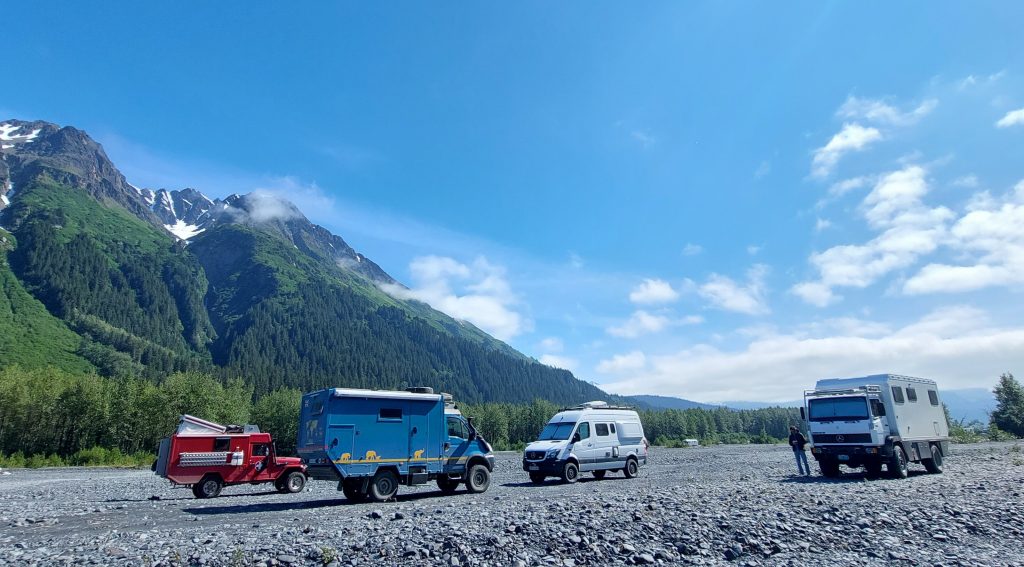
For us going to busy places is a bit of an ‘overlanding dilemma’. We don’t like crowds. But we have to accept that a busy place is busy for a reason: because it’s good, and worth doing. And it’s great to be sociable with other overlanders again after the long dearth during covid.
Tour Culture
Alaska tourism, more than any other place we’ve been to overlanding, exhorts a significant pressure on the visitor to ‘take a tour’. Yes, there’s lots you can do on your own. And you would have to try really hard to avoid all the spectacular scenery that makes Alaska worth the journey. But the really special stuff – the stuff highlighted in their global advertising like getting up-close to the ocean cliff-face of a glacier, or watching bears fishing for salmon – usually require you to fork-out for a flight, a boat trip, a tour guide etc. etc. etc.
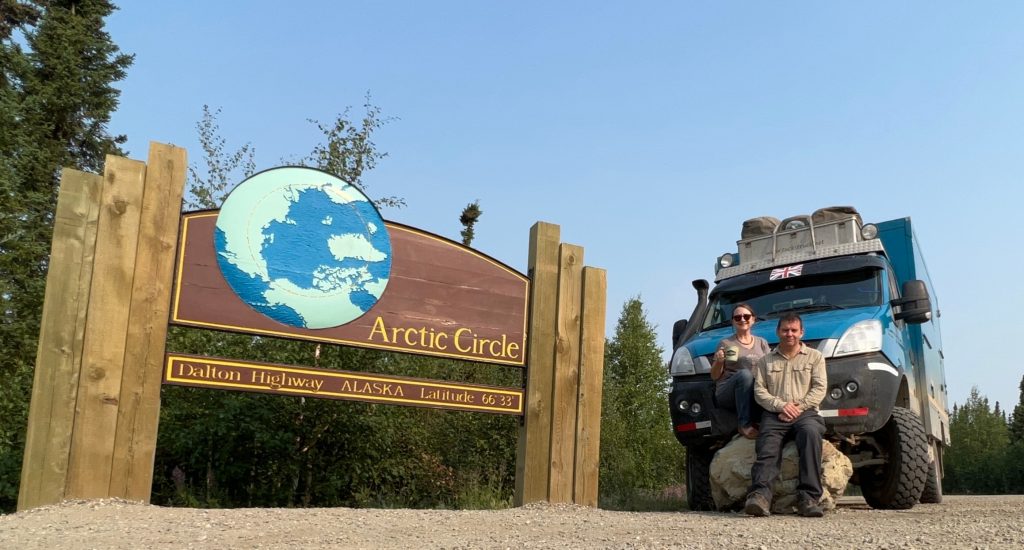
This ‘tour culture’ caused another of our occasional overlanding dilemmas to raise its ugly head. A dilemma which increases the longer we travel: our ‘been there, seen it, done it’ malaise. Any other long-term overlanders recognise this? We travel to see the world to visit unique places, see unique things, meet unique people, to experience things we couldn’t do anywhere else. So when we arrive somewhere bearing a close resemblance to places and experiences we’ve done before, we hesitate to take-a-tour to see a similar thing.
Here’s an example: in southern Alaska we can take a boat tour to see the beautiful coastline, with sea-reaching glaciers and little icebergs with seals lounging nonchalantly around. It’s an iconic experience and an understandably popular thing. But we saw all this back in Patagonia and Antarctica (and there we had the added bonus of trillions of penguins too). Beautiful though these Alaskan boat trips may be, it’s not a once-in-a-lifetime experience for us. Another popular thing here is to take a flight over glacial landscapes and land out on glaciers. We did this in the Yukon a couple of years ago, not far over the border from where we are now offered similar trips in Alaska. We ponder whether we really want to take another tour to do it again?
Our aim here is to see the things that make Alaska unique to us. We did try a salmon fly-fishing trip on the iconic (okay… amongst fishermen it’s said to be iconic) Russian River. This wouldn’t be everyone’s priority in Alaska. But it is a rather Alaskan thing to do, and more importantly to us, it’s something we haven’t done before.
So our Lesson Three is to consider which, if any, tours a traveller wants to do overlanding Alaska. Then do a bit of that thing we mostly neglect to do: planning.
Failing to Plan or Planning to Fail?
Generally, we find things just work out one way or another without much of a plan. Hands-up… we do get the occasional pinch of jealousy when someone else has the good foresight to plan ahead and the audacity 😉 to regale us with tales of the wonderful opportunity that we failed miserably to plan for. But we never learn.
Those tours we mentioned aren’t cheap, but we never heard anyone voice disappointment with them. Quite the contrary. One of the ‘must do’ tours is watching brown bears catching river salmon in Katmai National Park. If, unlike us, you ‘have all your ducks in a row’ you’ll do the sensible thing and pre-book this tour months in advance. With this impressive foresight you can arrange a fabulous multi-day trip for a few hundred bucks. But what if, like us, you just turn up and see what’s doing? Well then you’ll find the multi-day trips all booked-up. And you’ll find a last-minute day trip (with just a couple of hours at the bear site) costing over $1,200pp.
The upshot is, we missed the Katmai bears fishing. But we take consolation from watching many bears (grizzlies and black bears) foraging in the wilderness plus a few brown bears fishing for salmon at Hyder. Clearly this is very much not the same awesome experience as Katmai, but it was a wonderful thing to see and hey… it only cost $10!
The Light of Day
Alaska in summer is the Land of the Midnight Sun. Obviously everyone here sees this, but it raises some issues particular to overlanders. On the one hand, we love the never-ending daylight. On the other hand, we hate the never-ending daylight.
Let’s start with the plus: the low night-time light brings an angle of beauty to the already spectacular Alaskan scenery. You can sit out in the sunshine, admiring the views and forget it’s midnight! For overlanders, the additional Brucie Bonus is that it brings a freedom of schedule. Driving in darkness in remote places isn’t a good idea when the local moose-life has a proven propensity to leap in front of headlights. The midnight sun removes the limit that daylight hours usually bring to overlanding driving. So you can push-on over those looooong Alaskan distances.
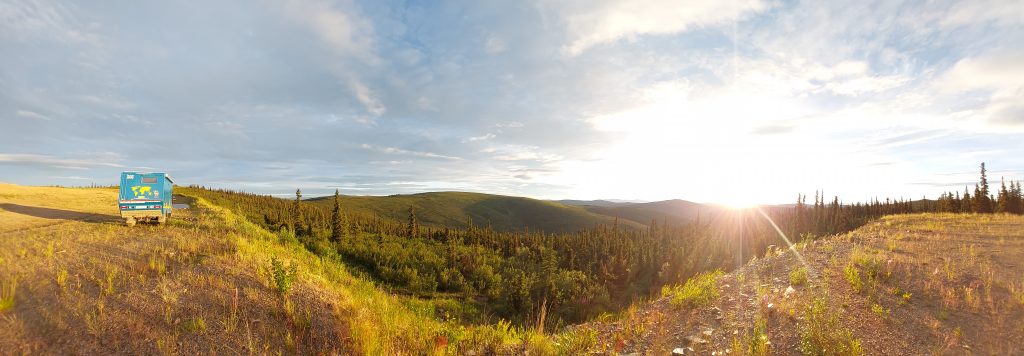
Another plus for overlanders is the inexhaustible supply of solar power. No matter how much we use the electric kettle, blend our fruit-smoothies or charge our laptops, Cuthbert’s leisure batteries are topped-up 24/7. Often, we get up in the morning and find that – despite the fridge having drawn power all night – the battery charge is higher than when we went to bed! Novelty.
And the downside? It plays havoc with our body-clock. Our circadian rhythm just doesn’t kick into life. The problem is easily remedied in a house/hotel with black-out curtains, but not so easily remedied in an overlanding rig. Yes, we can black-out the light. But the black-out blinds also block any air circulation. It’s not healthy or comfortable to sleep in a small box with no air circulation. If we open the blinds/roof-hatch for a bit of air, we’re blinded by the sunshine.
So our Lesson Four is to prepare your rig. Our ingenious solution (Brits would say ‘in true Blue Peter tradition’ 😉) was to cobble together some extremely rough-and-ready blinds from a brown paper bag and some sticky-back plastic. When we feel it should be getting dark, we hang the paper over the offending sources of light-leakage, allowing airflow but minimal light. Find what works for you.
There’s More to Alaska
As we all know, Alaska’s sole raison d’être is to satisfy overlanders’ hunger for epic drives, wilderness and nature. But our Alaska Lesson Four was that there’s much more here than spectacular scenery and amazing wildlife. Alaska sets itself apart from the ‘Lower 48’ with its unique history and culture. Here’s a few of our fave little nuggets of knowledge gleaned from the many museums and visitor centres.
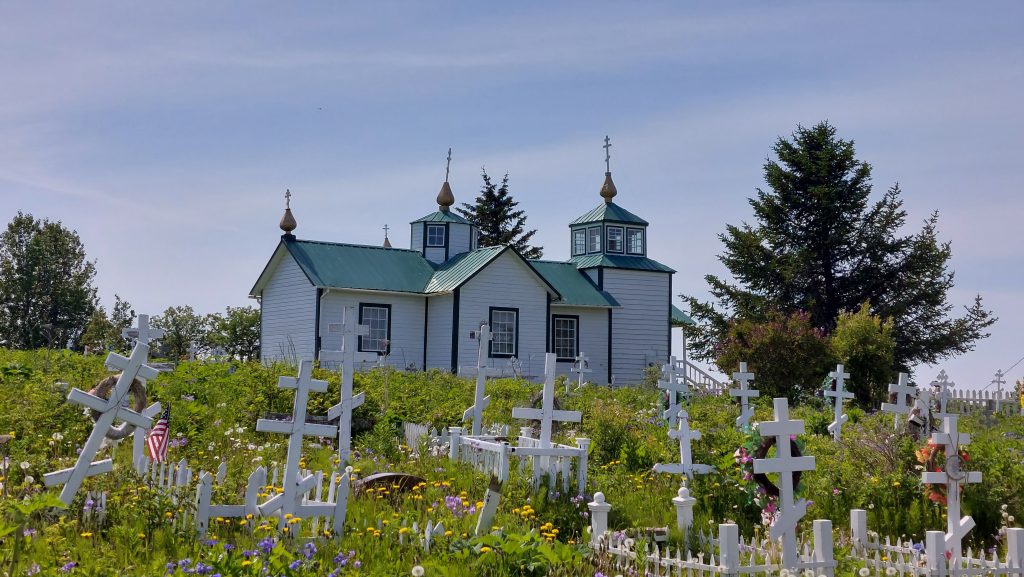
- Earthquakes are a thing here. Alaska has up to 40 minor un-noticeable tremors per day. It’s one of the most earthquake-prone regions on the planet. It’s rare they have a biggie (the last one was a tragedy in 1964) but the tourist office has leaflets on what to do if you’re unlucky enough to experience one.
- Oil is a staple of the Alaskan economy: from the 1960s discovery, to the tragic Exxon Valdez spill, to the (so far) successful Trans-Alaskan Pipeline, there’s much to learn across the State before forming your own opinion on this controversial industry.
- Huskies are part of both the history and the culture of Alaska, but husky racing is a big thing here too. In the Iditarod and Yukon Quest, intrepid mushers take their husky teams on extraordinarily arduous races across hundreds of miles of icy wilderness.
- Indigenous culture plays an important part of modern society and there are many opportunities to learn about the people, their crafts and traditions. We particularly enjoyed the Eskimo Indian Olympics in Fairbanks.
- History is always an interesting part of overlanding and Alaska is no exception. We learned that sitting somewhere between the First Nation indigenous early history and the transition to become a US State in 1959, Alaska had a Russian era which still influences communities today. And our final lesson on modern history was Alaska’s World War II role in the Battle of the Pacific. Everyone’s heard the Pearl Harbour bombing story. But who knew that the Alaskan Island of Attu was actually invaded and occupied by Japanese troops?
Every day is a school day in Alaska.
Alaska to Canada to Alaska
So finally, after the south, north and middle bits of Alaska we crossed back into Canada. That means Alaska is over… done… right? Well not quite. There are several chunks of coastal Alaska cut off from the Alaskan mainland, accessible either by sea or by transiting through Canada. We crossed through Canada to get to Hyder, Alaska.
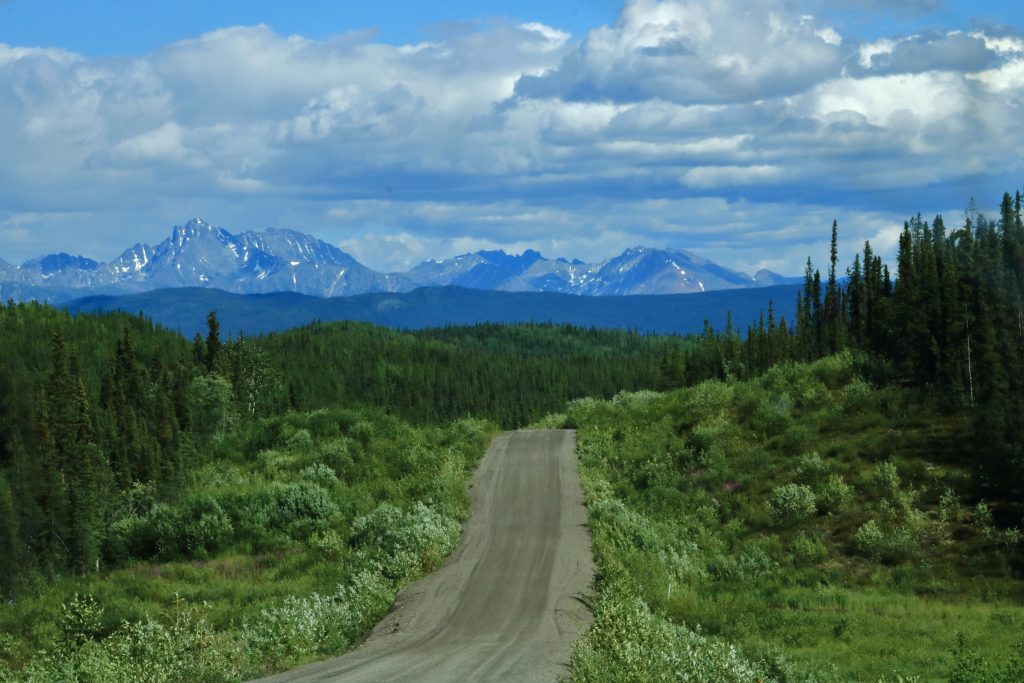
On our way through the Yukon we revisited Dawson City. Unlike our last visit during covid when we were literally the only tourists there, the town is now buzzing with visitors. We had a twinge of jealousy that this time we had to share what we (unreasonably) considered to be ‘our’ camp-spot with other overlanders😉. Southbound we took the remote Robert Campbell trail, visiting Faro and Ross River. These remote communities understandably weren’t welcoming outsiders when we were last toured the Yukon, but they’re back up for tourism now. Then we took a nostalgic drive down the Stewart-Cassiar Highway, spotting the places we’d been unable to visit last time due to them being snow-bound in the harsh Canadian winter.






Bears of Hyder, Alaska
After 1,700 km through Canada, we re-enter Alaska at Hyder with its two main attractions. First, it’s the spot where people like us (who don’t plan well enough to see the fishing-bears in Katmai) can see the lovely, but much less impressive, sight of a few bears fishing in the river. Secondly, Hyder is the route (through Alaska and back again on a dead-end road in Canada) to the awesome Salmon Glacier. We’ve seen a lot of glaciers in our time, but this one is one of the most spectacular and well worth the bumpy drive up the mountain trail.




Salmon Glacier
Cheers Canada
After a few days of glaciers and fishing bears, we head from Hyder back into Canada and the last leg back to the USA Lower 48. Our final few days through British Columbia and the Albertan Icefield Parkway are retracing very familiar routes for us. We’d spent a long time in this area during covid and it was nice to see it all thriving again now with a full-on tourist season. Tempting though it was to stop and spend time in our familiar, favourite haunts, we commit to pushing on to pastures new. The summer is short up here and we’ve lots of places to cram into the next few weeks.
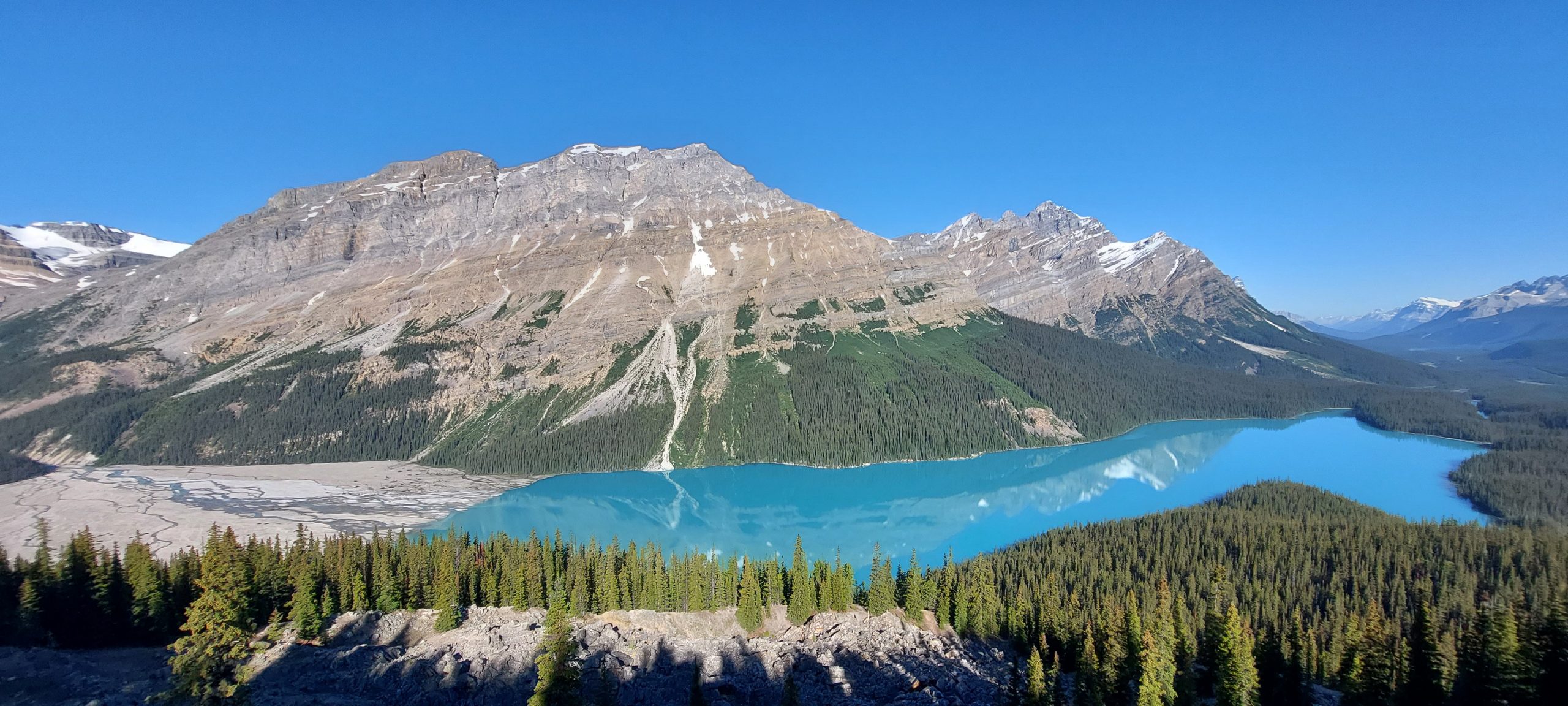
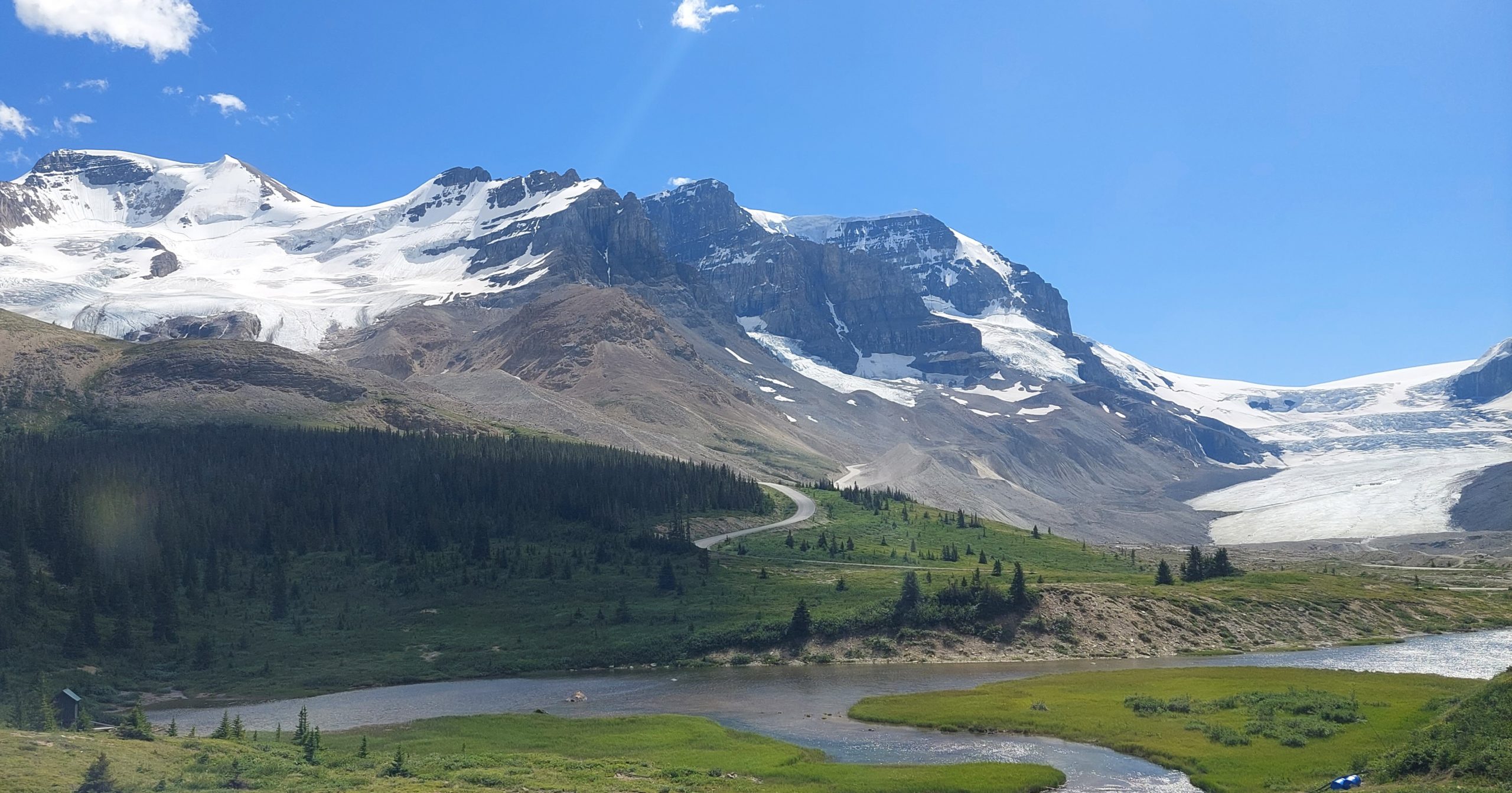
Back down Canada’s amazing Icefield Parkway… again!
Saying a final farewell to Canada was strange after spending a total of almost 2 years there since the start of covid. We have no idea when we’ll be back, but it will always be a special place for us. We’ll always be grateful for the warm welcome and the friendliness shown to us during the pandemic.
Next… stay tuned as we hit Montana for some epic ‘bucket list’ National Parks of the USA.
